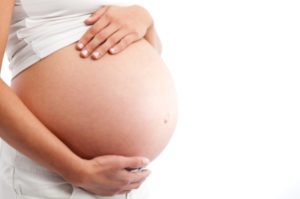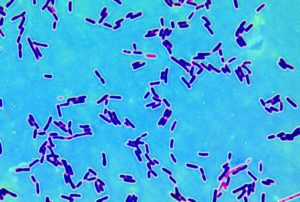 Once again the Mediterranean diet is linked to health benefits - this time a 40% lower incidence of certain types of breast cancer in postmenopausal women. Following a Mediterranean style diet has been linked in earlier studies to various health benefits, such as lower rates of heart disease, lower rates of early death, and certain cancers.
Once again the Mediterranean diet is linked to health benefits - this time a 40% lower incidence of certain types of breast cancer in postmenopausal women. Following a Mediterranean style diet has been linked in earlier studies to various health benefits, such as lower rates of heart disease, lower rates of early death, and certain cancers.
A strength of this study is that so many (62,573) Dutch postmenopausal women were followed for a long time (about 20 years). Their diet was analyzed, especially how closely it matched the Mediterranean diet or not. Since alcohol is a risk factor for breast cancer, and dose-related - it was not included as part of the Mediterranean diet in this study. The study found that following a Mediterranean diet with higher consumption of nuts, fruits, vegetables, and whole grains, appeared to be protective against certain breast cancers - it was associated with a reduced risk of estrogen receptor–negative (ER-) breast cancers. Unfortunately the researchers did not look at olive oil use in this study, because when it started in 1986, it was not typically used in the Netherlands. However, another good study found extra virgin olive oil to be a protective part (against breast cancer) of the Mediterranean diet. From Medscape:
Mediterranean Diet Cuts Some Breast Cancer Risk by 40%
Closely following a Mediterranean diet in everyday life may significantly reduce the risk for types of breast cancer that are associated with poorer prognoses in postmenopausal women, new research indicates. The traditional Mediterranean diet is characterized by a high intake of plant proteins, whole grains, fish, and monounsaturated fat, as well as moderate alcohol intake and low intake of refined grains, red meat, and sweets, say the study authors, led by Piet A. van den Brandt, PhD, an epidemiologist at the Maastricht University Medical Center in the Netherlands.
The new findings come from 62,573 Dutch women aged 55 to 69 years who provided information on dietary and lifestyle habits in 1986 and have since been followed for more than 20 years....The investigators found that women who most closely adhered to a Mediterranean diet had a 40% reduced risk for estrogen receptor–negative (ER-) breast cancer compared to women who adhered to the diet the least. They found a 39% reduced risk for progesterone receptor–negative (PR-)/ER- disease when comparing these same high- and low-adherence groups. Notably, in these results, the definition of the diet excluded alcohol intake, because the consumption of alcohol is a known risk factor for breast cancer....The authors also report that there were no significant associations with the diet and the risk of ER+ disease or total breast cancer.
Dr van den Brandt also explained that older women, who were the subjects of the new study, are more likely to derive benefit than younger women. "Generally speaking, postmenopausal breast cancer seems somewhat more influenced by environmental factors, such as lifestyle and diet, than premenopausal breast cancer, where genetic factors seem to play a more prominent role," he told Medscape Medical News.
Dr Toledo was the senior author of the only large, randomized trial to date in which postmenopausal women were assigned to a dietary intervention to promote their adherence to the traditional Mediterranean diet (JAMA Intern Med. 2015;175:1752–60). The study found that women with a higher adherence to the diet (supplemented with extra-virgin olive oil) showed a substantial reduction of their risk for breast cancer compared to a control group, as reported by Medscape Medical News.

 Another large study looking at screening mammograms for breast cancer has raised the issue of overdiagnosis and overtreatment once again. The purpose of mammography screening is to find cancer when it is small and so prevent cancer from growing and becoming advanced cancer. However, the researchers did not find this - there was a major increase in finding small cancers (the kind that may grow so slowly as to never cause any problems or that may even regress), but the rate of advanced cancers stayed the same.
Another large study looking at screening mammograms for breast cancer has raised the issue of overdiagnosis and overtreatment once again. The purpose of mammography screening is to find cancer when it is small and so prevent cancer from growing and becoming advanced cancer. However, the researchers did not find this - there was a major increase in finding small cancers (the kind that may grow so slowly as to never cause any problems or that may even regress), but the rate of advanced cancers stayed the same. Vitamin D deficiency has been implicated in a variety of cancers (
Vitamin D deficiency has been implicated in a variety of cancers ( More bad news about BPA (bisphenol A) - an
More bad news about BPA (bisphenol A) - an  Yikes! A good reason to lose weight now rather than years from now, and the importance of not ignoring a weight gain (you know, over the years as the pounds slowly creep up). The researchers found that for every 10 years of being overweight as an adult, there was an associated 7% increase in the risk for all obesity-related cancers. The degree of overweight (dose-response) during adulthood was important in the risk of developing cancer, especially for
Yikes! A good reason to lose weight now rather than years from now, and the importance of not ignoring a weight gain (you know, over the years as the pounds slowly creep up). The researchers found that for every 10 years of being overweight as an adult, there was an associated 7% increase in the risk for all obesity-related cancers. The degree of overweight (dose-response) during adulthood was important in the risk of developing cancer, especially for  Get active, really active, to reduce your risk for 5 diseases: breast cancer, colon cancer, heart disease, and ischemic stroke. Instead of the 150 minutes of brisk walking or 75 minutes per week of running (which is equal to the 600 metabolic equivalent (MET) minutes now recommended by the World Health Organization), this study found that much more exercise is needed for
Get active, really active, to reduce your risk for 5 diseases: breast cancer, colon cancer, heart disease, and ischemic stroke. Instead of the 150 minutes of brisk walking or 75 minutes per week of running (which is equal to the 600 metabolic equivalent (MET) minutes now recommended by the World Health Organization), this study found that much more exercise is needed for  Credit: Medscape
Credit: Medscape Amazing! Researchers found that the bacteria found in breast cancer patients and healthy patients are different. (
Amazing! Researchers found that the bacteria found in breast cancer patients and healthy patients are different. ( Surprising results (to me at least) from research comparing various diets and incidence of several cancers in 11,082 individuals in the Netherlands over a 20 year period. I expected the daily meat eaters to have higher rates of the 3 cancers studied, but no....
Surprising results (to me at least) from research comparing various diets and incidence of several cancers in 11,082 individuals in the Netherlands over a 20 year period. I expected the daily meat eaters to have higher rates of the 3 cancers studied, but no....